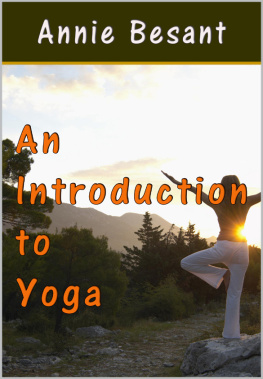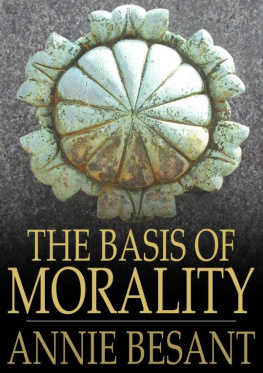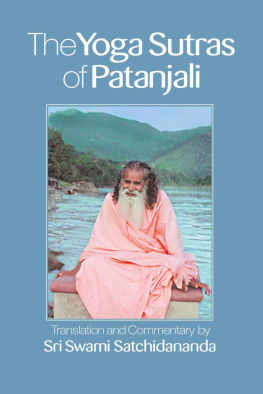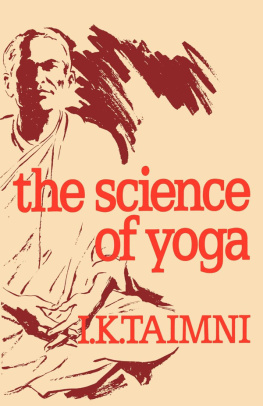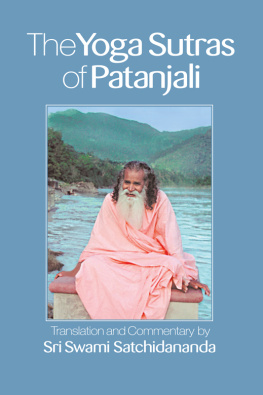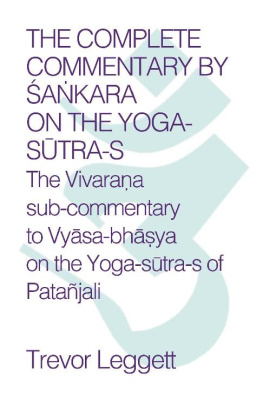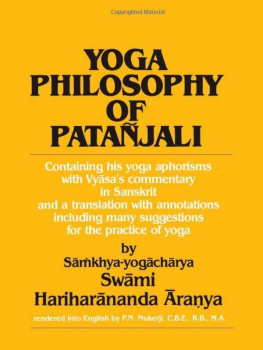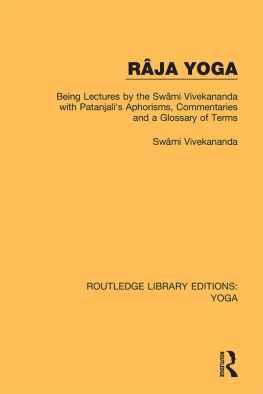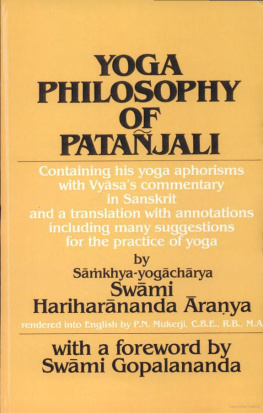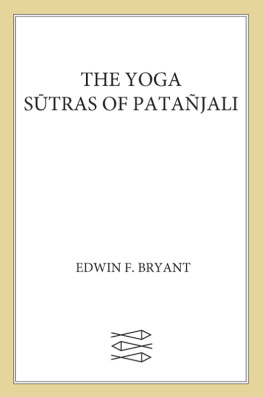An Introduction to Yoga
Annie Besant
Sai ePublications
Contents
Foreword
These lectures To prepare the student for the mastering of that more difficult task, these lectures were designed; hence the many references to Patanjali. They may, however, also serve to give to the ordinary lay reader some idea of the Science of sciences, and perhaps to allure a few towards its study.
Annie Besant
Lecture I
THE NATURE OF YOGA
In this first discourse we shall concern ourselves with the gaining of a general idea of the subject of Yoga, seeking its place in nature, its own character, its object in human evolution.
The Meaning of the Universe
Let us, first of all, ask ourselves, looking at the world around us, what it is that the history of the world signifies. When we read history, what does the history tell us? It seems to be a moving panorama of people and events, but it is really only a dance of shadows; the people are shadows, not realities, the kings and statesmen, the ministers and armies; and the events the battles and revolutions, the rises and falls of states are the most shadowlike dance of all. Even if the historian tries to go deeper, if he deals with economic conditions, with social organisations, with the study of the tendencies of the currents of thought, even then he is in the midst of shadows, the illusory shadows cast by unseen realities. This world is full of forms that are illusory, and the values are all wrong, the proportions are out of focus. The things which a man of the world thinks valuable, a spiritual man must cast aside as worthless. The diamonds of the world, with their glare and glitter in the rays of the outside sun, are mere fragments of broken glass to the man of knowledge. The crown of the king, the sceptre of the emperor, the triumph of earthly power, are less than nothing to the man who has had one glimpse of the majesty of the Self. What is, then, real? What is truly valuable? Our answer will be very different from the answer given by the man of the world.
"The universe exists for the sake of the Self." Not for what the outer world can give, not for control over the objects of desire, not for the sake even of beauty or pleasure, does the Great Architect plan and build His worlds. He has filled them with objects, beautiful and pleasure-giving. The great arch of the sky above, the mountains with snow-clad peaks, the valleys soft with verdure and fragrant with blossoms, the oceans with their vast depths, their surface now calm as a lake, now tossing in fury they all exist, not for the objects themselves, but for their value to the Self. Not for themselves because they are anything in themselves but that the purpose of the Self may be served, and His manifestations made possible.
The world, with all its beauty, its happiness and suffering, its joys and pains" is planned with the utmost ingenuity, in order that the powers of the Self may be shown forth in manifestation. From the fire-mist to the LOGOS, all exist for the sake of the Self. The lowest grain of dust, the mightiest deva in his heavenly regions, the plant that grows out of sight in the nook of a mountain, the star that shines aloft over us-all these exist in order that the fragments of the one Self, embodied in countless forms, may realize their own identity, and manifest the powers of the Self through the matter that envelops them.
There is but one Self in the lowliest dust and the loftiest deva. "Mamamsaha" My portion, "a portion of My Self," says Sri Krishna, are all these Jivatmas, all these living spirits. For them the universe exists; for them the sun shines, and the waves roll, and the winds blow, and the rain falls, that the Self may know Himself as manifested in matter, as embodied in the universe
The Unfolding of Consciousness
One of those pregnant and significant ideas which Theosophy scatters so lavishly around is this that the same scale is repeated over and over again, the same succession of events in larger or smaller cycles. If you understand one cycle, you understand the whole. The same laws by which a solar system is builded go to the building up of the system of man. The laws by which the Self unfolds his powers in the universe, from the fire-mist up to the LOGOS, are the same laws of consciousness which repeat themselves in the universe of man. If you understand them in the one, you can equally understand them in the other. Grasp them in the small, and the large is revealed to you. Grasp them in the large, and the small becomes intelligible to you.
The great unfolding from the stone to the God goes on through millions of years, through aeons of time. But the long unfolding that takes place in the universe, takes place in a shorter time-cycle within the limit of humanity, and this in a cycle so brief that it seems as nothing beside the longer one. Within a still briefer cycle a similar unfolding takes place in the individual rapidly, swiftly, with all the force of its past behind it. These forces that manifest and unveil themselves in evolution are cumulative in their power. Embodied in the stone, in the mineral world, they grow and put out a little more of strength, and in the mineral world accomplish their unfolding. Then they become too strong for the mineral, and press on into the vegetable world. There they unfold more and more of their divinity, until they become too mighty for the vegetable, and become animal.
Expanding within and gaining experiences from the animal, they again overflow the limits of the animal, and appear as the human. In the human being they still grow and accumulate with ever-increasing force, and exert greater pressure against the barrier; and then out of the human, they press into the super-human. This last process of evolution is called "Yoga."
Coming to the individual, the man of our own globe has behind him his long evolution in other chains than ours this same evolution through mineral to vegetable, through vegetable to animal, through animal to man, and then from our last dwelling-place in the lunar orb on to this terrene globe that we call the earth. Our evolution here has all the force of the last evolution in it, and hence, when we come to this shortest cycle of evolution which is called Yoga, the man has behind him the whole of the forces accumulated in his human evolution, and it is the accumulation of these forces which enables him to make the passage so rapidly. We must connect our Yoga with the evolution of consciousness everywhere, else we shall not understand it at all; for the laws of evolution of consciousness in a universe are exactly the same as the laws of Yoga, and the principles whereby consciousness unfolds itself in the great evolution of humanity are the same principles that we take in Yoga and deliberately apply to the more rapid unfolding of our own consciousness. So that Yoga, when it is definitely begun, is not a new thing, as some people imagine.
The whole evolution is one in its essence. The succession is the same, the sequences identical. Whether you are thinking of the unfolding of consciousness in the universe, or in the human race, or in the individual, you can study the laws of the whole, and in Yoga you learn to apply those same laws to your own consciousness rationally and definitely. All the laws are one, however different in their stage of manifestation.
If you look at Yoga in this light, then this Yoga, which seemed so alien and so far off, will begin to wear a familiar face, and come to you in a garb not wholly strange. As you study the unfolding of consciousness, and the corresponding evolution of form, it will not seem so strange that from man you should pass on to superman, transcending the barrier of humanity, and finding yourself in the region where divinity becomes more manifest
Next page
